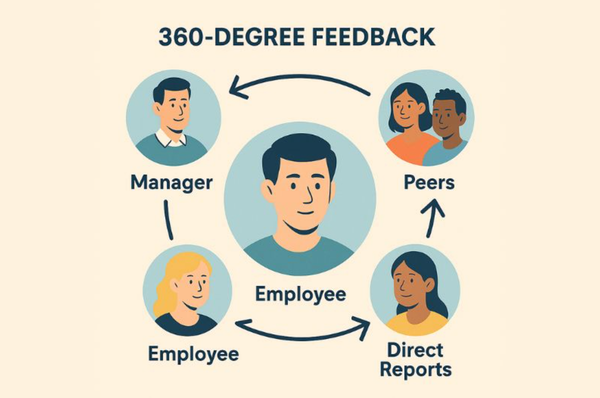How To Engage Remote Employees For Better Teamwork
Engaging remote workers can be a challenge, here is a guide on how to increase engagement for better teamwork.

Remote work has transformed the way businesses operate, offering flexibility and access to a global talent pool. However, it’s also made it difficult to implement company culture consistently and keep remote workers fully engaged with one another for great teamwork.

Let’s say you have workers across the globe on three different continents. In each country, there is a different work ethic and culture. Then there’s your company and what you’re trying to communicate as a brand message.
It can be difficult to marry the two. But it’s important that you do because remote workers are your brand ambassadors, and if they feel part of a unit, they do a better job at flying the flag high.
Below are actionable steps you can take immediately to connect remote workers with your culture and encourage productive teamwork.
Nurture your company culture
Keeping remote employees engaged in your company culture is one of the trickiest aspects of having a remote team. Without a clear understanding of what your mission statement is, the values you want to embody, and how you’ll reward a belief in those values, remote workers tend to fill in the blanks for themselves.
Remote employee engagement with your culture is the glue that holds the whole thing together. They need to know they’re part of something greater than themselves, and they need to feel they belong to a group they care about.
Here are some suggestions for apps you can use to keep remote employees connected and communicate culture.
How technology can be a game changer in culture building
By using digitalization (which is already intrinsically a part of remote work) as your secret weapon for keeping employees connected, you can integrate employee engagement software. This will help you communicate culture without making a big deal out of it, and organically introduce your remote workforce to what matters.
Using technology to communicate your company values creates cohesion amongst remote team members and provides business leaders with a way to keep their finger on the pulse of how their employees feel.
Employee engagement activities such as virtual coffee breaks, peer recognition, and even birthday wishes seem deceptively simple and almost provoke skepticism about whether they’ll work - especially when you’re dealing with corporate employees.
The only response that can be given to this kind of skepticism (which is perfectly natural) is that people respond instinctively to certain drivers, no matter who they are or where they are.
Also, more often than not, it's the simplest solution that works the best, precisely because it’s not hard to implement or keep going.
Once you have your culture initiatives ticking along nicely, it's time to implement the next step for engaging remote employees.
Create opportunities for personal feedback and development
Another way to engage remote workers is to arrange one-on-one meetings (virtual meetings) for performance reviews. Employees who know they will be having a discussion about their performance are more likely to take a personal interest in key performance indicators.
Direct reports appreciate the interest and input of their managers, even if it’s quarterly, because it provides an opportunity to discuss their personal well-being and development needs.
Performance and development discussions can be highly beneficial for building trust, loyalty, and motivating employees, yet they need to be structured and productive. Here are four key factors that make a great P&D discussion:
- Set clear expectations beforehand for the meeting: Clearly outline goals, performance metrics, and development opportunities. Give the employee time to consider the information that will be reviewed and question the accuracy of that information if need be. Transparency is non-negotiable if you want to build trust.
- Provide constructive feedback: Offer balanced feedback on strengths and development areas with specific examples and actionable insights. Keep the tone positive (unless there are serious performance issues), and steer clear of subjective statements that do not have evidence to back them up.
- Encourage employee input: Allow employees to share their thoughts, opinions, and experiences. Demonstrate the culture values of open communication and careful listening.
- Follow up with actionable steps: Develop an actionable plan with the employee with milestones and support mechanisms. Explain what resources you can provide to help the employee meet their career goals and how you can support their development efforts.
Better remote employee engagement is just a few steps away
Honestly speaking, and from experience, you don’t need a whole bunch of fancy initiatives to get your remote team engaged and working as an effective team. We human beings are pretty simple creatures. Even if we believe we’ve ‘evolved,’ we find ourselves gravitating pretty much towards the same things that have worked for eons.
Technology (a remote workers domain) can help you create a culture where people thrive together, and feel passionate about their participation in something they love. No one spends hours in front of their digital devices without some pretty significant internal drivers at work in them. Fact.
Pressing on those internal drivers is a way to build great teams because they speak to the heart of what most individuals want. But at the same time, it shouldn’t be difficult for you or your employees to participate. The simpler the better, and if it’s something you can do at a reasonable cost, all the more reason for it!
Begin with the path of least resistance (install apps like Pulsy, Clappy, and Alfy - and don’t forget Billy) and if they don’t help you encourage the values you want to see (we doubt it), you can try another approach.
We hope this discussion has been engaging (see what we did there?). If you’re looking for more, we’ll see you at the virtual water cooler!





